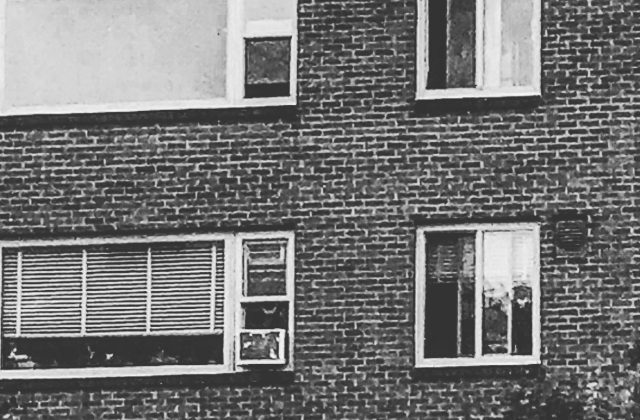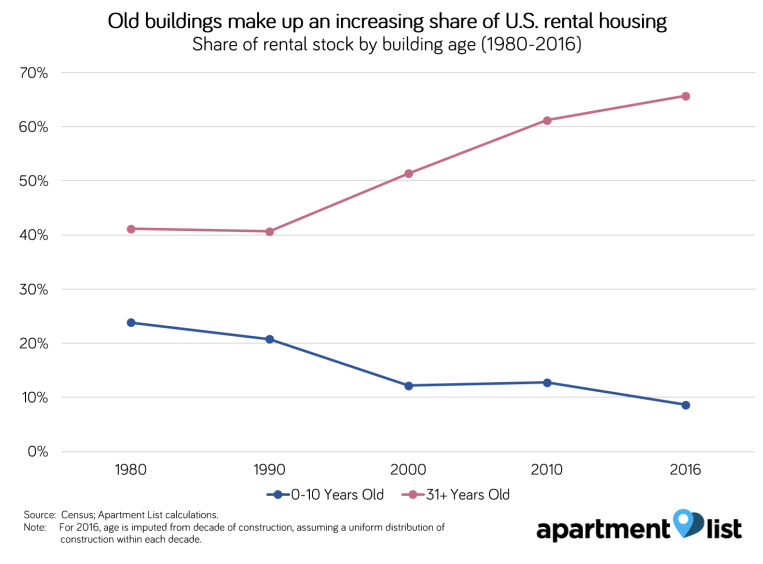Surprise! Older Buildings and New Construction Mean Lower Rents
I’m not going to say much other than, yep, “We told you so!” Well maybe not you in particular, but the wide world in general. What’s the big shocker? It’s from Apartment List:
As cities across the U.S. debate ways to improve affordability, it is crucial to understand the important role that aging buildings play in providing a source of market rate affordable housing for those who do not qualify for subsidized options. In a healthy housing market, buildings become less desirable as they age, leading to falling rents. However, without a sufficient supply of new construction, demand will remain high for older buildings, preventing their rents from falling [emphasis is theirs].
If you want to read the gory details you can find all the data to back this up you can download it here. And here’s a chart in case that’s not enough.
Call it trickle down housing or filtering or whatever you want, but the truth is that as we build more new housing, all the other housing even if its just a few years older, becomes less likely to hold up a higher rent. As a market gets saturated with housing, yes, it’s true, prices do down. I know. It’s also hard to believe based on the world as we experience it that the world isn’t flat but a swiftly spinning globe whirling around the sun.
If you’re still reading this you’re either enjoying my sarcasm or you’re outraged. But as satisfying as it is to see data that validates reducing regulation and opening the market’s flood gates for new housing supply, the political reality in most cities, and especially Seattle, is that when prices go up local government must introduce more rules, more taxes and fees, and do everything it can to stomp on new housing construction. We’ll keep working on trying to change that until they turn out the lights.



